Project Timeline: 11 months
Group Project/Research Paper: Dr. Mark Lust, Dr. Shangyi Chen, Dr. Nima Ghalichechian, & Annie Roo
Project Objective: To assist in developing the framework for cyclic power cycling and conduct corresponding RF measurements on the reliability of VO2 as a phase change material
[IEEE Transactions on Device and Materials Reliability]: "Reliability of VO2-based mmWave Switches Under 100 Million Thermal Cycles"
Testing Setup
My primary work on this project is helping to set up the means of inducing thermal cycling to the wafer (causing the VO2 to change phases) and then conducting testing on a Programmable Network Analyzer (PNA).
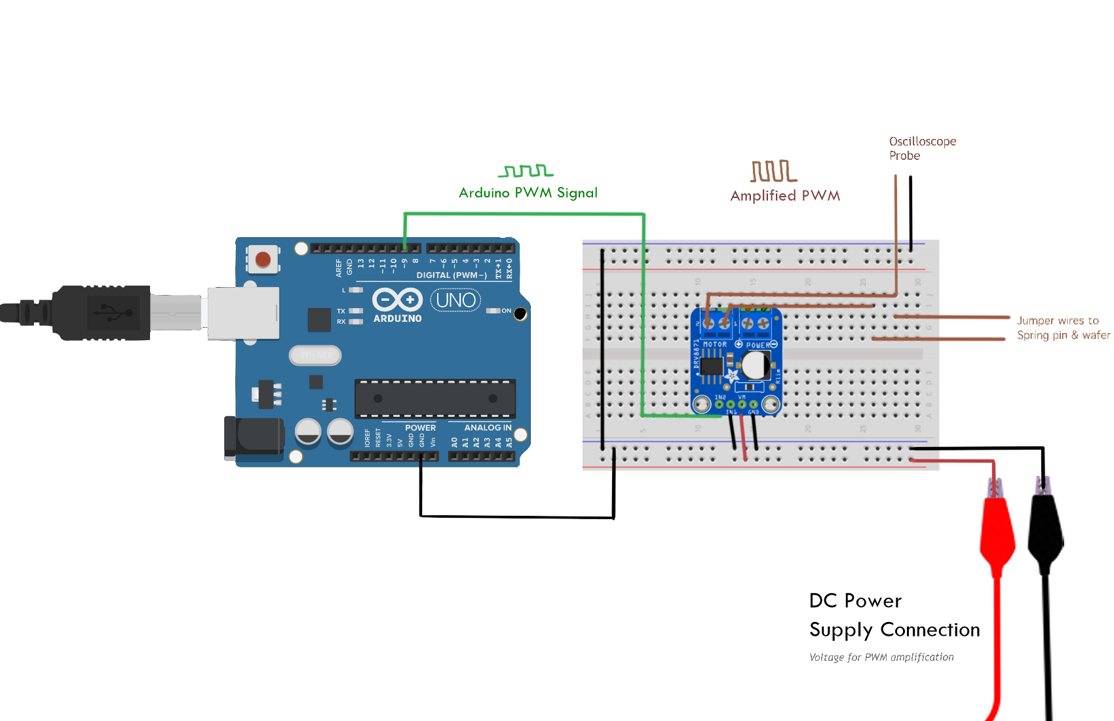
Arduino Setup w/written code to provide thermal cycling
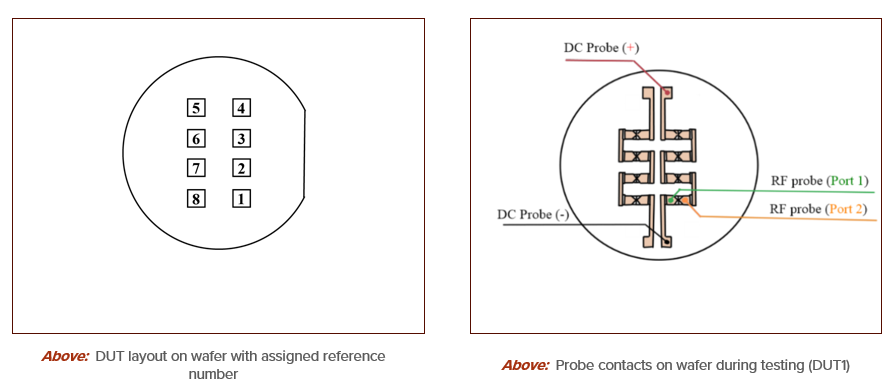
General setup of the RF wafer and locations of probes

Testing Setup

Probe Station Closeup
TESTING PROCEDURE
TEST RESULTS
On our first wafer, using DUT 1, we supplied an increasing and decreasing voltage to the VO2 and took the corresponding S-Parameter data at each level.
Below features a GIF I compiled showing the dynamic change from 10V to 15V and back to 10V as well as a hysteresis graph I created.
Below features a GIF I compiled showing the dynamic change from 10V to 15V and back to 10V as well as a hysteresis graph I created.
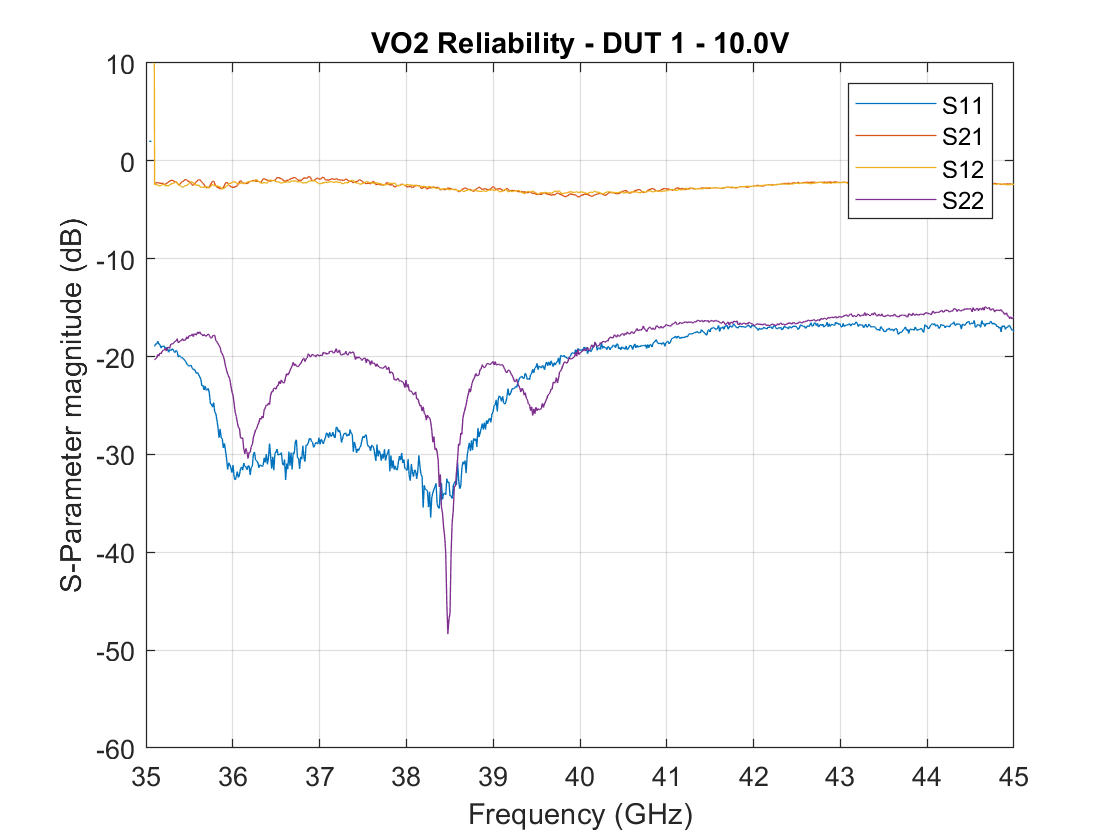

For the primary reliability data, DUTs 5-8 were cycled with 100 Hz, 15V PWM wave for a certain number of cycles (1e5, 1e6, 1e7, 1e8) and the corresponding hot state (15V) and cold state (0V) S-Parameter data was taken and recorded for each DUT.
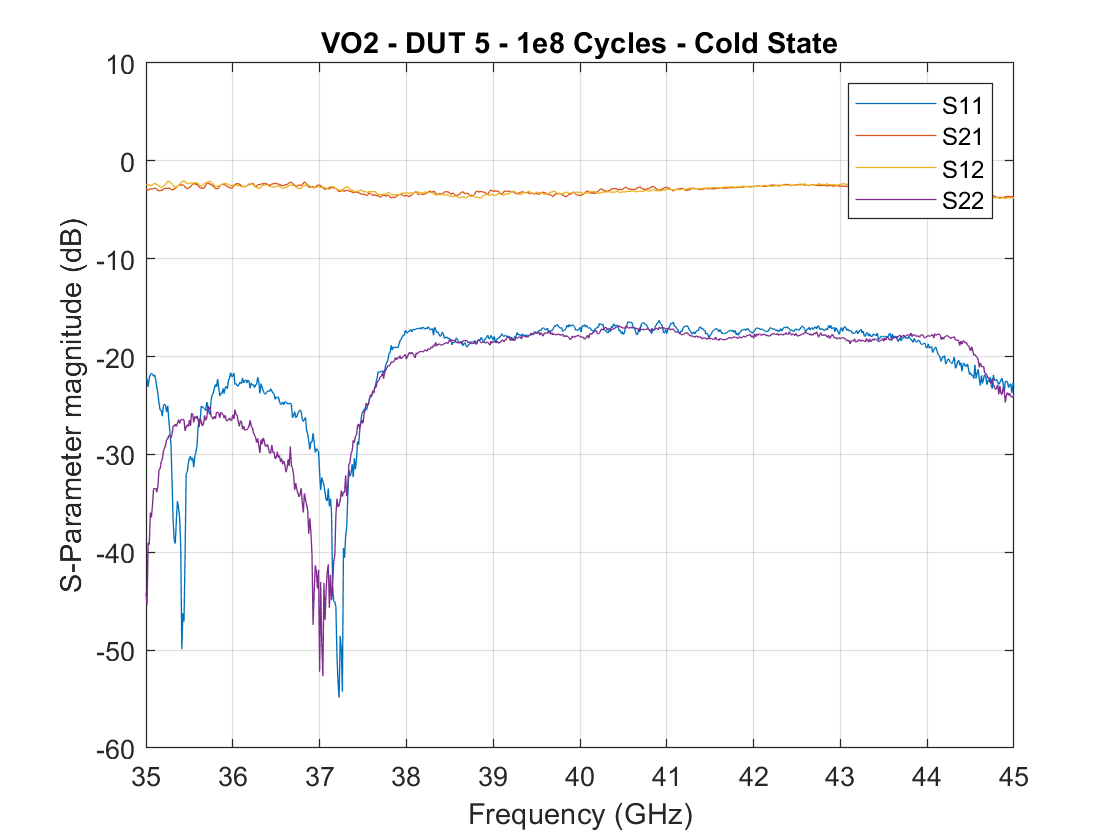
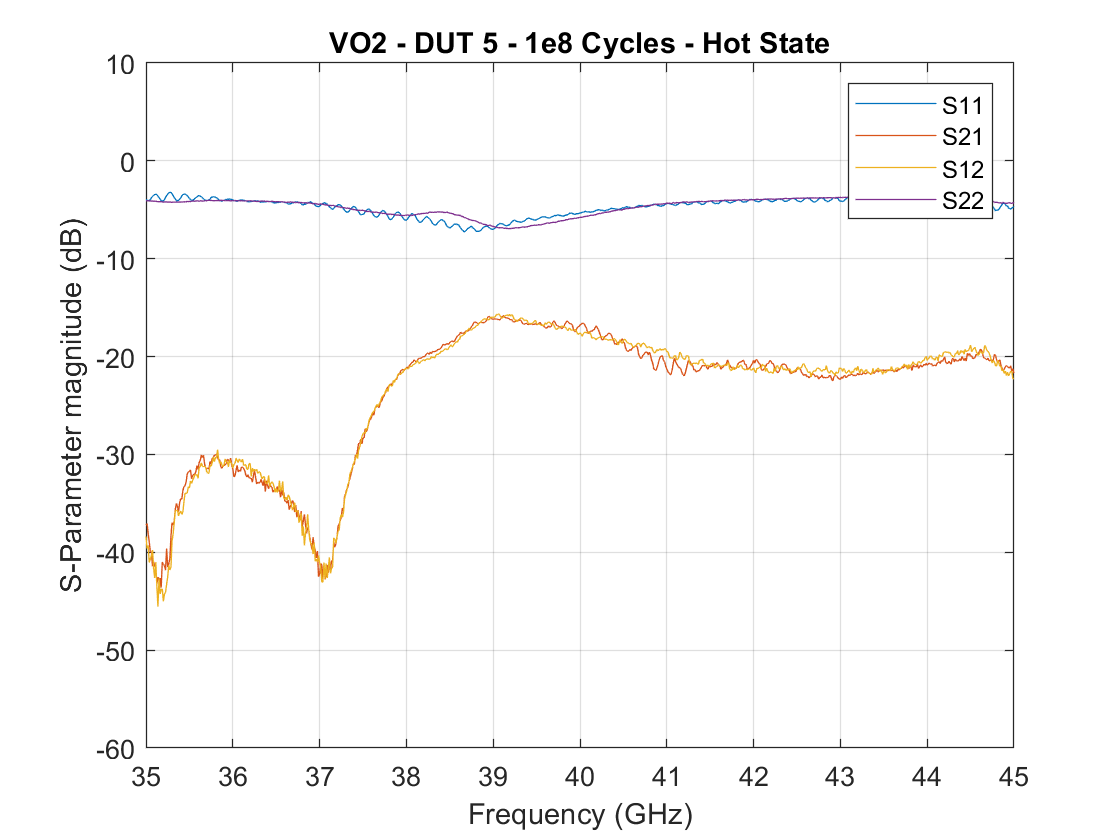
From the S-Parameter data, the 35 GHz frequency was isolated and a box and whisker plot was created to showcase if there was any degradation in the performance of VO2 in a statistic visual.
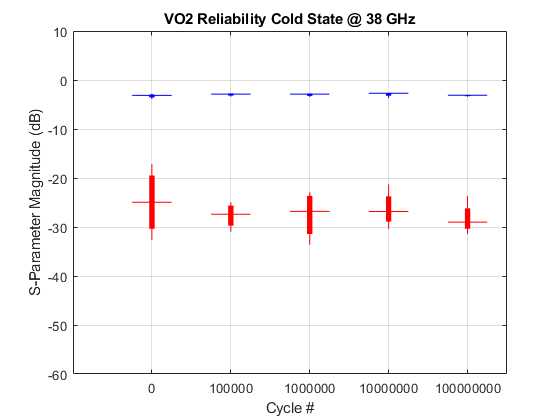
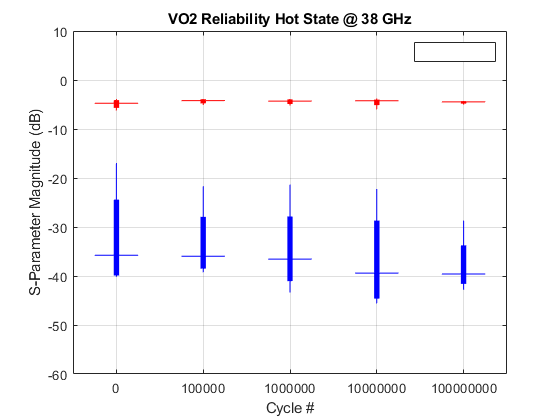
TEST CONCLUSIONS
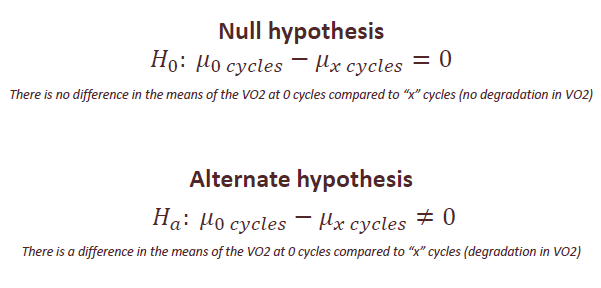
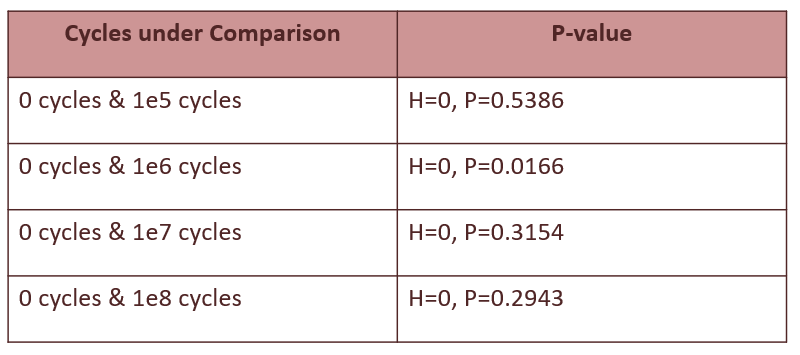
A paired t-test analysis was done to determine if there was degradation in the VO2 after thermal cycling, and it was statistically determined with an alpha significance level of 0.01 that there was no significant difference in the S-Parameter results
